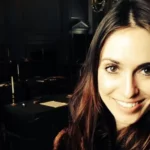BY ELIZABETH DILTS
DURING THIS YEAR’S Lucy Hobbs Annual Celebration in Philadelphia, Dr. Patricia Blanton, at the dais to accept her Industry Icon Award, brought the several hundred attendees to their feet with one deceptively simple observation: “We are pioneers,” she exulted. “Not settlers.”
She elaborated: Settlers, well, settle. And settling is most certainly not what the Lucy Hobbs Project is about. You honor and pay tribute to those who came before you, of course, but only true pioneers take the risks and log the achievements that move an industry — indeed, a society — forward. Dr. Blanton noted Hobbs’s extraordinary perseverance under duress: “She requested entrance [into dental school] in the 1860s and was denied. She went out and worked and then applied again. She was not accepted the second time.” Finally, of course, Hobbs gained admission — and changed our profession forever. “We must make that same difference,” Dr. Blanton continued, her voice rising. “That’s who I see here today: pioneers, not settlers.” Cue standing ovation.
Inspiraion of that magnitude was the house specialty throughout each day of this year’s Hobbs Celebration, and the stars of the show were the half-dozen remarkable women who took home this year’s awards, whose stories you’ll read on the pages ahead. Their attributes are varied, but their passion and commitment aren’t. This year’s award winners, and all those who joined us in Philadelphia, truly embody the fighting spirit and community devotion we like to think would make Hobbs herself smile.
Lucy Hobbs, a pioneer par excellence, transformed dentistry. Now, more than 150 years later, her toweringly inspirational spiritual descendants, whom we honor here, are doing exactly the same.
INDUSTRY ICON
Patricia Blanton, DDS, MS, Ph.D
Age: 72
Practice: James Island Family, Cosmetic & Implant Dentistry, Charleston, South Carolina; interim dean, Medical University of South Carolina’s James B. Edwards College of Dental Medicine
Specialty: Periodontics
Education: DDS, certificate in periodontics, Baylor College of Dentistry; MS and Ph.D. in anatomy, Baylor
IF THERE IS one single maxim that encapsulates Dr. Patricia Blanton’s approach to leading the dozen-plus state and national organizations she has helmed over the years, it’s this: “The wrong culture can never create the right plan.”
Dr. Blanton is, after all, a woman whose abbreviated curriculum vitae is five pages long — and she has applied this mantra at every stop throughout her varied career. It was especially pertinent when, in 2003, she was elected the first female president of the Texas Dental Association.
“When I got there, I saw a lot of really good people working very hard, but the organization was not going anywhere,” she says of her tenure there. Under her direction, the TDA developed a strategic plan that everyone was able to get behind; she was summarily rewarded with the association’s highest honor, the Gold Medal of Distinguished Service.
In 2014, the Texan sold her Dallas practice and left Baylor University, where she had lectured for more than three decades, to take a professorship in the Department of Stomatology at the Medical University of South Carolina. In July 2016, she was named interim dean of the university’s College of Dental Medicine, tasked with guiding the school through the accreditation process, revising its curriculum and hiring new leaders in oromaxillofacial surgery, periodontics, pedatric dentistry, oral rehabilitation and orthodontics.
Dr. Blanton is candid about the importance of accreditation to the college’s future. It can be disruptive, she says, unless “everybody sees the significance and wants to work together.” As former commissioner of the ADA’s Commission on Dental Accreditation, she is certainly well-placed to navigate the terrain ahead.
A lifelong lecturer, mentor and leader, Dr. Blanton says she’s simply practicing what she preaches. “Do not wait,” she implores. “The time will never be ‘just right.’ Start where you stand, and work with whatever tools you have at your command. You’ll find better tools as you go.”
HUMANITARIAN
Winifred Booker, DDS
Age: 59
Practice: Valley Dental Pediatrics, Owings Mills, Maryland; chief executive and director of development, the Children’s Oral Health Institute, Owings Mills, Maryland
Specialty: Pediatric dentistry
Education: DDS, Meharry Medical College School of Dentistry; certificate in pediatric dentistry, Children’s National Medical Center
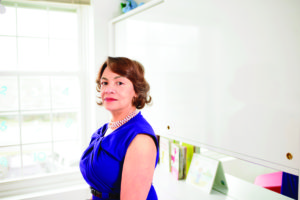 a FIVE-FOOT-TALL force of nature, Dr. Winifred Booker wears a princess crown with a protective face mask attached when treating her young patients in Owings Mills, Maryland, a Baltimore suburb. She has also single-handedly transformed an everyday object for elementary-school kids into a tool to promote awareness of children’s oral health.
a FIVE-FOOT-TALL force of nature, Dr. Winifred Booker wears a princess crown with a protective face mask attached when treating her young patients in Owings Mills, Maryland, a Baltimore suburb. She has also single-handedly transformed an everyday object for elementary-school kids into a tool to promote awareness of children’s oral health.
Since 2008, Dr. Booker’s Lessons in a Lunch Box program has sent more than 45,000 tangerine-colored lunch boxes to first- through third-grade students in nearly every state. (In recognition of this and much else, Incisal Edge four years ago inducted Dr. Booker into our Hall of Fame — see “The Pied Piper,” Spring 2013.) Each lunch box contains Dr. Booker’s patented Dental Care in a Carrot, an orange container designed to store a toothbrush; Silly Strawberry toothpaste; Tutti Frutti dental floss and a rinse cup.
On the inside lid of each box is an illustration showing the “5 Steps to Good Flossing and Brushing,” as well as the USDA’s Food Plate — the updated version of its famous Food Pyramid. On the outside is a shiny reflective sticker that reads SEE YOURSELF BECOMING A DENTIST, with a URL at which kids can explore what it’s like to work as a dentist, hygienist, dental assistant and lab technician.
Distribution of the boxes is handled by the Children’s Oral Health Institute, a group Dr. Booker founded in vacant office space adjacent to her pediatric dental clinic. Elementary schools can sign up for a free shipment; volunteers then visit to present a short lesson to teach the kids how to use the new tools. The program has received funding from the Dental Trade Alliance, the American Dental Hygiene Association and the Henry Schein Company; Sunstar Americas and Colgate-Palmolive have donated supplies.
“For professional dental medicine, the hallmark of what we do is prevention,” says Dr. Booker. “Look at how much fun these kids have with those lunch boxes! If they carry those lessons with them long-term, we won’t be doing as much drilling and filling.” She pauses, then smiles. “The floss is Tutti Frutti. What’s not to like?”
INNOVATOR
Margaret Fickess, RDA, CDA, M.Ed.
Age: 71
Practice: Director of Dental Assisting, San Diego Mesa College Dental Assisting Program
Specialty: Dental assistance
Education: San Diego Mesa College Dental Assisting Program
WHEN SHE GRADUATED from San Diego Mesa College’s dental-assisting program nearly 50 years ago, Margaret Fickess’s only work experience to that point had been as a bookkeeper and staffer at her parents’ health-food store. Little did she know that she was about to embark on a decades-long career devoted to raising the status of dental assistants and help others like her realize their professional potential.
“My passion is to help underserved students who want a better life for themselves and their children,” says Fickess, who is now the director of the program she completed all that time ago.
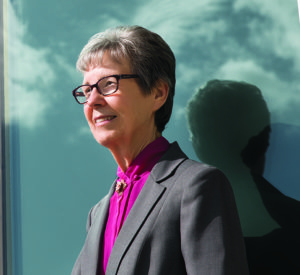 Every year, she oversees a class of roughly two dozen students as they learn their craft in the school’s high-tech 11-chair dental clinic, which Fickess designed. The program runs from June to May; upon graduation, all students are encouraged to take California’s Registered Dental Assistant exam. They can go to work straight out of school, typically earning $13 to $18 an hour thanks to their certification in infection control, X-ray safety, ethics and CPR. Obtaining RDA certification, though, can garner them a substantial raise — an additional $10 an hour, in the case of one recent graduate, Fickess says.
Every year, she oversees a class of roughly two dozen students as they learn their craft in the school’s high-tech 11-chair dental clinic, which Fickess designed. The program runs from June to May; upon graduation, all students are encouraged to take California’s Registered Dental Assistant exam. They can go to work straight out of school, typically earning $13 to $18 an hour thanks to their certification in infection control, X-ray safety, ethics and CPR. Obtaining RDA certification, though, can garner them a substantial raise — an additional $10 an hour, in the case of one recent graduate, Fickess says.
According to the federal Bureau of Labor Statistics, median annual pay for dental assistants was just under $36,000 in 2015, and prospects for the profession look bright: The BLS projects that demand for dental assistants will increase 18 percent by 2024 — more than twice the national average for all occupations — making students like Fickess’s highly desirable in the years ahead.
Among her other interests, Fickess volunteers with the California Dental Association Cares program, which offers free treatment to as many as 2,000 patients a month. She also donates time to the Children’s Dental Health Clinic and additional programs that promote dental education for underserved children. After all, some of those children might end up students of hers someday. Fickess says her life’s work pays dividends every day: “My caring and compassion for all my students to teach them a career has been wonderful for me.”
Margaret
MENTOR
Emily Ishkanian, DMD
Age: 35
Practice: Green Valley Dental Center, Henderson, Nevada
Specialty: General dentistry
Education: DMD, University of Nevada, Las Vegas School of Dental Medicine
NO ONE EVER SAID that getting one’s career going is easy — but for new dentists grappling with such issues as employment agreements, office leases or how to fit in as a new associate in someone else’s practice, the honeymoon can end much faster than anticipated.
“You wonder if this is normal or if you made the right decisions, whether with a patient, a patient plan or your career in general,” says Henderson, Nevada–based dentist Dr. Emily Ishkanian. “Sometimes it’s not what you expected.”
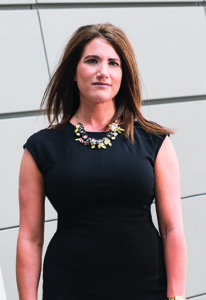 Dr. Ishkanian faced some of these hurdles herself — so in 2011, she created the Southern Nevada New Dentists network to help others help themselves when starting out. The group initially brought together other young dentists in the Las Vegas area for continuing education, professional development, networking and mentoring, and her idea clearly hit a nerve. SNND began to attract national attention, and in 2013, the American Dental Association asked Dr. Ishkanian to serve on its New Dentist Committee. Through that organization, she has since led national, state and local efforts to help new dentists transition from school to work. Now in the final year of her four-year term on the committee, she calls the ADA group “the voice of the new dentist.”
Dr. Ishkanian faced some of these hurdles herself — so in 2011, she created the Southern Nevada New Dentists network to help others help themselves when starting out. The group initially brought together other young dentists in the Las Vegas area for continuing education, professional development, networking and mentoring, and her idea clearly hit a nerve. SNND began to attract national attention, and in 2013, the American Dental Association asked Dr. Ishkanian to serve on its New Dentist Committee. Through that organization, she has since led national, state and local efforts to help new dentists transition from school to work. Now in the final year of her four-year term on the committee, she calls the ADA group “the voice of the new dentist.”
“I did not have a parent in dentistry, and if it hadn’t been for my own mentors, my path would have been an intimidating challenge,” Dr. Ishkanian says. “I feel like now is my chance to do that for someone in my position.”
Her four years with the ADA group have been a nonstop flurry of networking, mentoring, counseling and advising other young dentists. Through it all, she has stuck to some simple advice for recent graduates and other new doctors who, between seeing patients and being bogged down by student-loan debt, experience regular bouts of self-doubt: In five years, you’ll feel much better about all this. “Just get to five years, because you learn so much in the first five that you don’t know initially,” Dr. Ishkanian says, seemingly addressing her legion of mentees. “Once five years hits, it all kind of clicks.”
WOMAN TO WATCH
Irene Marrou-Tarrazzi, DMD, MS
Age: 42
Practice: Brickell Periodontics, Miami, Florida
Specialty: Periodontics
Education: Universidad Central de Venezuela, Odontología; DMD, Nova Southeastern University; MS and certificate in periodontics, University of North Carolina at Chapel Hill
AS VICE PRESIDENT of the American Dental Association, Dr. Irene Marron-Tarrazzi brought youth and diversity to a professional association not generally known for either. In its 158-year history, the ADA has had just four female presidents, and just one African-American. The ranks of its vice presidents have been more richly hued, but even so, Dr. Marron-Tarrazzi stood apart from the crowd: a young woman who had been trained internationally and was running a successful solo practice on Miami’s high-end Brickell Avenue.
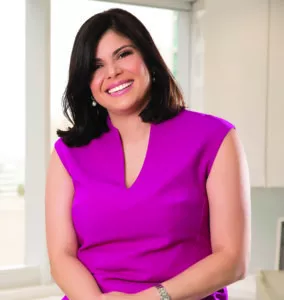 What drove her? “A commitment to being part of the group that defines the future of our profession,” she says. Her successful presence on the board has prompted the ADA’s board of trustees to consider requiring that the vice presidency be held by a young dentist.
What drove her? “A commitment to being part of the group that defines the future of our profession,” she says. Her successful presence on the board has prompted the ADA’s board of trustees to consider requiring that the vice presidency be held by a young dentist.
With her work, Dr. Marron-Tarrazzi says, she has aimed to do more than pave the way for other young women in leadership. Research shows that when the top tier of an organization looks like the members it represents, it’s more likely to attract new participants from across its demographic spectrum. “I like to think my experience has helped [the ADA’s] leaders recognize that there are many demographics once considered ‘different’ that are eager to be heard and could make valuable contributions to the future of our profession,” she says.
For her own part, Dr. Marron-Tarrazzi continues to be a leader not just for the ADA, but for the Florida Dental Association and South Florida District Dental Association besides. These days she focuses on promoting patient-centered care and working to address dentistry’s gender pay gap. “Being a good volunteer is not about the title you hold but what you can help to accomplish,” she says. “The message I’d like to convey to my female colleagues is that it’s possible to be bold and take chances professionally, to not be afraid to defy the status quo, to be as persistent as you can be, to be resilient, have courage and be prepared to change the world.”
CLINICAL EXPERTISE
Andrea Joy Smith, DDS
Age: 56
Practice: Dr. Andrea Joy Smith Family Dentistry, Sacramento, California
Specialty: Implants and cosmetic dentistry
Education: DDS, University of California, San Francisco
“I FEEL LIKE I’M on a constant quest to solve the problems of my patients,” says Dr. Andrea Joy Smith.
That’s also the sentiment she had in mind a decade ago, in 2007, when she sat in a 3M training course to learn how to use a new product called Mini Dental Implants. In her Sacramento practice, Dr. Smith had been treating an elderly woman who complained that her lower denture had slipped and was uncomfortable. The woman, who usually went out dancing or rollerskating with other retired friends several times a week, had become something of a recluse — unwilling to use her bothersome dentures and embarrassed by the condition of her mouth.
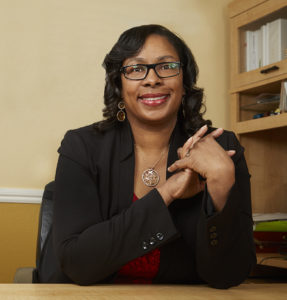 Dr. Smith knew that the typical solution — have a surgeon place two implants near the front of the patient’s mouth, connect them with a metal bar and attach new dentures to that bar — wasn’t right in this case. The woman was older, after all, and the procedure’s multiple visits, bone grafting, months of recovery time and $20,000 price tag were all out of the question. “She’s one of those patients who was really locked out of getting the conventional implant,” Dr. Smith recalls.
Dr. Smith knew that the typical solution — have a surgeon place two implants near the front of the patient’s mouth, connect them with a metal bar and attach new dentures to that bar — wasn’t right in this case. The woman was older, after all, and the procedure’s multiple visits, bone grafting, months of recovery time and $20,000 price tag were all out of the question. “She’s one of those patients who was really locked out of getting the conventional implant,” Dr. Smith recalls.
Mini Dental Implants, she says, were a game changer. The product costs half as much as regular implants, and can be loaded with the crown or denture the same day. Her patient was back dancing in no time.
Since that first successful procedure, Dr. Smith has made Mini Dental Implants a core offering of her practice and become a diplomat for the International Academy of Mini Dental Implants, teaching others how to use them.
She likewise continues to add new methods to her daily work as well, including the Chao Pinhole Surgical Technique for gum treatment, to help her solve big problems for patients in the most hassle-free, pain-free way possible. “I look for those minimally invasive techniques,” Dr. Smith says, “that can have a really big impact.”
TRAILBLAZERS
Evie Guenterberg
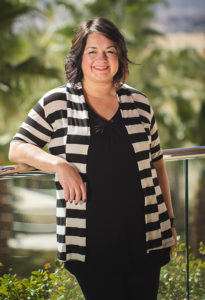 CHANGE-MAKING WOMEN in dentistry run the gamut, from Lucy Hobbs herself — who might have retired the trophy before the contest even began, frankly — to the thousands of practitioners and dental-school students eager to ply their trade in a welcoming profession.
CHANGE-MAKING WOMEN in dentistry run the gamut, from Lucy Hobbs herself — who might have retired the trophy before the contest even began, frankly — to the thousands of practitioners and dental-school students eager to ply their trade in a welcoming profession.
Sun Prairie, Wisconsin–based Evie Guenterberg, 39, knew she was truly in the right place when Benco Dental inaugurated the Lucy Hobbs Project a half-decade ago. “So many women in dentistry bring change every day with talent and compassion,” says Guenterberg, a Territory Representative who has been with Benco since 2003. “The Lucy Hobbs Project presents camaraderie as well as a unique platform for women to be validated and heard.”
To that end, Guenterberg collaborated with Dr. Kendra Schaefer, a prosthodontist in nearby Madison, to develop a networking community in and around Wisconsin’s capital city. The group has since grown substantially. “Networking events unite like-minded people who inspire each other,” Guenterberg says. “Giving back makes such a positive impact.”
Among her proudest achievements are the two times practitioners she nominated were honored with Lucy Hobbs Awards. (Dr. Schaefer took home the Clinical Expertise award in 2015; Dr. Pamela Schmidt earned the Innovation award a year later.) To be named a Trailblazer in her own right, she says, is therefore freighted with significance. “I work with more women dentists every year,” she says, “and every year, more women dentists are buying their own practices.” Advances like those help ensure that for this industry change maker, change won’t stop
Robert Lehm
THE IMPACT OF the Lucy Hobbs Project is far greater when its ideals are taken outside existing industry parameters to help those still forging their own path in the profession.
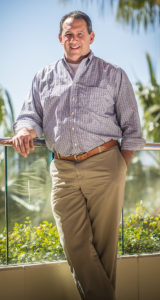 Few understand that better than Robert Lehm, Benco Dental’s Desert Regional Manager for the last three years and a 28-year veteran of the industry overall. Headquartered in Phoenix, the 53-year-old Lehm has established an annual Lucy Hobbs Project Scholarship at the University of Nevada at Las Vegas’s School of Dental Medicine — an award given to a third- or fourthyear student who has made significant contributions to dentistry, the community and dental education overall.
Few understand that better than Robert Lehm, Benco Dental’s Desert Regional Manager for the last three years and a 28-year veteran of the industry overall. Headquartered in Phoenix, the 53-year-old Lehm has established an annual Lucy Hobbs Project Scholarship at the University of Nevada at Las Vegas’s School of Dental Medicine — an award given to a third- or fourthyear student who has made significant contributions to dentistry, the community and dental education overall.
Lehm has also been active in bringing Lucy Hobbs events to the southwest, hosting one such gathering in tandem with the Southern Nevada Dental Society in 2016. “Dentistry is immensely blessed to have such a presence of women entering the profession,” Lehm says. “Women bring a level of nurturing, patience, caring and well-being that serves the profession well, even beyond patient care.”
He’s also unfailingly modest about his own contributions, significant though they’ve been in imbuing new areas of the country with the spirit of Lucy Hobbs. “The recognition for me is not important,” he says. “What pleases me is if the recognition brings awareness to others who can find ways to leverage the Lucy Hobbs Project to the betterment of their dental communities and businesses. It’s a vehicle for fostering change in the profession that can have a direct impact on both patient care and the career goals of women alike.”
KEYNOTE SPEAKER PANEL
Robyn Benincasa
POWER PLAYER
YOU MIGHT CALL Robyn Benincasa an overachiever. A renowned adventurer racer, world-record kayaker and San Diego firefighter, she can now add one more line to her glittering résumé: that of keynote-address giver at this year’s Lucy Hobbs Celebration.
Speaking to the gathering of hundreds of dental professionals, she shared her inspiring personal story and discussed the surprising overlap between adventure racing — in which teams compete in multi-day treks under the most arduous conditions imaginable — and success in business and medicine. Incisal Edge caught up with her prior to the event.
You’ve mentioned that adventure racing used to mandate at least one woman on every team. That’s no longer the case. Can you explain?
What we discovered over the years was not only that women were really good at adventure racing, but we were also better in heat, in cold, at the end of the race. Women went from mandatory equipment to some of the best adventure racers in the world.
What sorts of team-building lessons can dentists, male and female alike, glean from what you’ve learned on adventure courses?
Nobody wants to be out in the jungle covered with leeches and wearing the same Lycra outfit for 10 days, but every successful businessperson is in an adventure race every day: It’s mixed-gender, there’s an endless series of checkpoints, an impossible goal, great time pressure, against the best in the world. That’s your adventure race.
What have you discovered over the years about women’s leadership styles?
Women at the top of any industry aren’t trying to be men. They’re trying to use their core strengths and talents to succeed. The road might be different, but the finish line is the same. Women tend to move toward the “affiliative” leadership style: lead by friendship, lead by coaching. It’s more effective than people who run a pace-setting, or coercive, style.
What’s your take on what Lucy Hobbs was able to achieve?
The endurance it took for her to bust the system, to be that breakthrough — she saw what she wanted and wasn’t willing to accept anything else. That’s a great example for all of us.
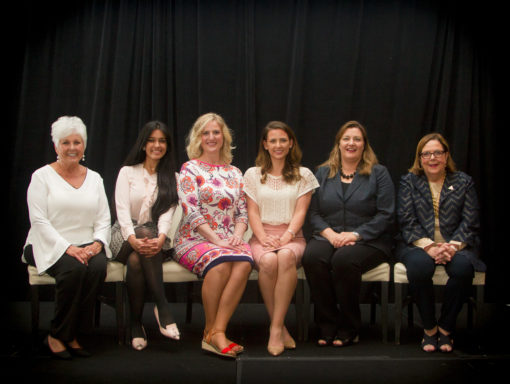
WOMEN’S WORK WHO EVER SAID education was dry? The Lucy Hobbs Annual Celebration put paid to that notion with this year’s CE course — a lively six-strong panel discussion, “Emerging Leaders in Dentistry: The Female Influence,” that brought together a number of luminaries to share the stage. Moderated by Linda Miles of Ultimate Team Mastery, a dental continuing- education firm, the panel included:
• Dr. Kady Rawal: Boston dentist and academic; 2016 Woman to Watch Lucy Hobbs Award recipient
• Katti Webb Simpson: Hygienist in the Bangor, Maine, area; 2014 Clinical Expertise Lucy Hobbs Award recipient
• Melanie Martel: Student at the University of Pennsylvania School of Dentistry (see next page)
• Sarah Anders: COO, Ivoclar-Vivodent North America
• Dr. Maxine Feinberg: Dentist in Cranford, New Jersey; past president of the American Dental Association
The animating sentiment was Dr. Feinberg’s: “Women need to help women get ahead.” A lively, insightful discussion followed, encompassing the challenges of the dental-education model, maintaining a work-life balance, the nature of being in charge (“A leader creates other leaders, not followers,” Miles observed), the role hygienists play in bridging the gap between practitioners and their patients, and much more. At the end, Dr. Feinberg capped off the chat in style. “Go home and look in the mirror, women,” she said. “You all look presidential.
STUDENT TO WATCH
Melanie Martel
PENN IS MIGHTIER
ONE INDICATION of how far dentistry has come since Lucy Hobbs’s time is the makeup of modern dental schools. Women are now more than half of dental students in the U.S., with greater opportunities than ever.
One prime example: Melanie Martel, 27, who recently completed her predoctoral education at the University of Pennsylvania School of Dentistry. Martel — who is vice president of the Penn Dental Women’s Network and who this July will begin her endodontics residency there — was a panelist for the continuing-education portion of this year’s Lucy Hobbs Celebration, a wide-ranging discussion on gender and achievement in dentistry (see previous page). Incisal Edge spoke with her beforehand to get her thoughts on the profession — and Lucy Hobbs’s burgeoning legacy
How familiar are you with Lucy Hobbs?
The Penn Dental Women’s Network paired with the Lucy Hobbs Project last year to offer a “yoganomics” CE course and business-attire donation event at Penn. There I learned about Lucy Hobbs, her dedication to the profession and the obstacles she overcame, as well as the Project and its commitment to empowering women.
Women in dental school as recently as the 1980s have shared horror stories about their treatment. What has your experience been?
My class is over 50 percent women, so gender bias doesn’t seem relevant day to day. Women are also well-represented in the faculty, both pre-clinically and clinically, offering well-rounded mentors to the female student body.
What are your career goals, both immediate and long-term?
Immediately, I’m eager to start my endodontics residency. After that, I look forward to a long and active career in endodontics and organized dentistry.
What’s the key lesson you draw from the life and experience of Lucy Hobbs?
My greatest personal takeaway from her successes and struggles is her perseverance. Women still have a long way to go to balance gender bias in dentistry as a whole, but reflecting on where we were and where we are now, our profession has evolved considerably



